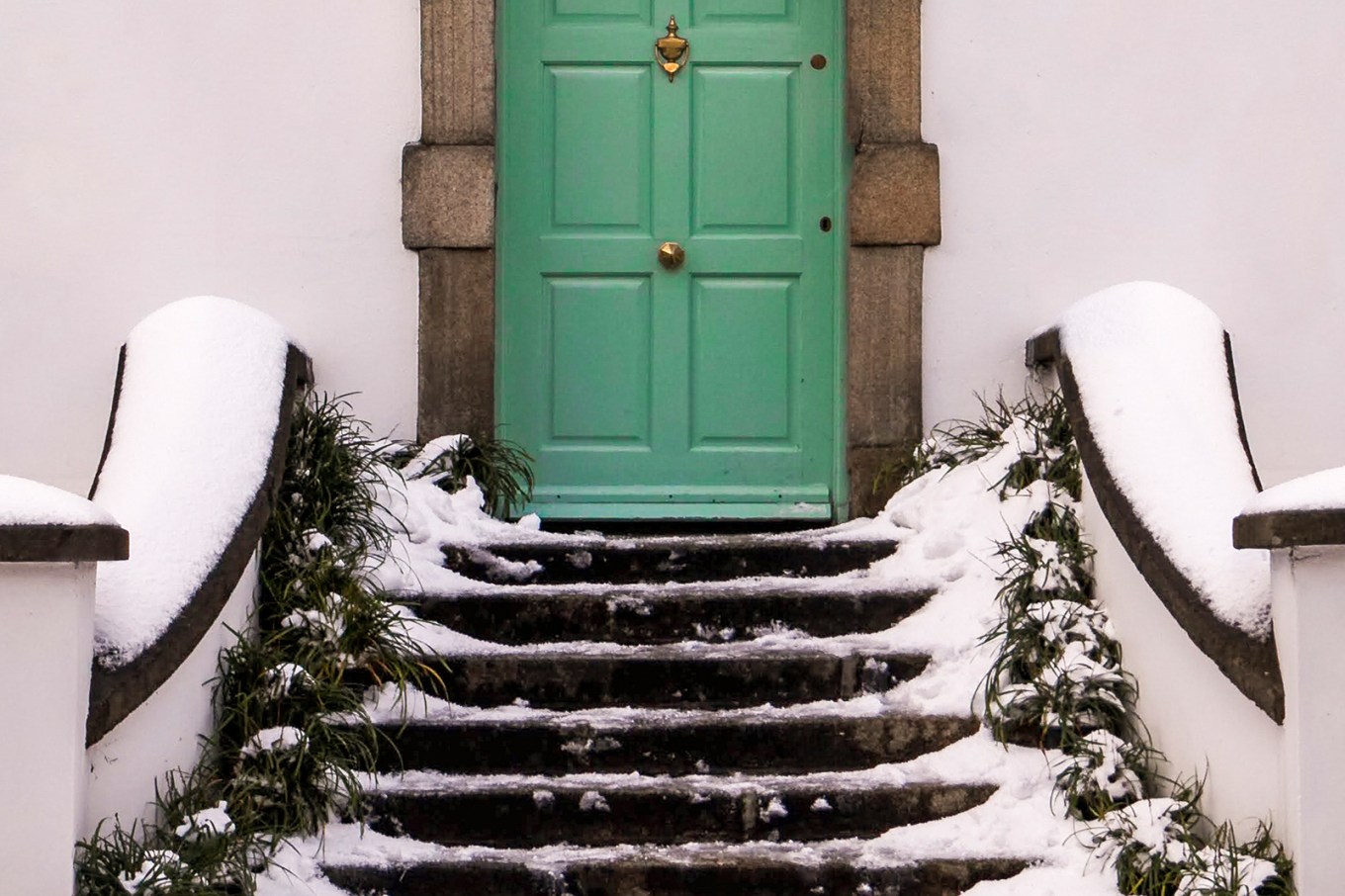There’s no denying it: Ice on steps and walkways is extremely dangerous, leading to countless injuries each year. It’s bad enough if you or a family member take a tumble, but it may be even worse if someone else does. Under certain circumstances, you could be liable if someone slips and injures themselves while on your property.
Thankfully, salt and ice can’t co-exist. Commercial deicers use various chemical variations of salt to melt away dangerous ice on patios, walkways, and driveways.
Unfortunately, those same chemicals can harm fish, wildlife, and household pets. In addition, they can corrode your hard masonry outdoor surfaces.
How Salt Melts Ice
Salt and deicers are effective ice-melting agents because they lower the freezing point of water, turning ice back into water. Salts and deicers are cheap, effective, simple to use, and easier than attacking ice with brute physical force.
How Deicing Salt Can Be Harmful
That same chemical magic that turns ice into water creates a very salty brine that can make household pets sick, and eats away at outdoor hardscaping made of concrete, brick, and stone.
Deicing products also can damage your plants by altering the chemical composition of the soil in planting beds and yards. Inside the home, tracked-in salt can mar carpets and wood floors.
The problem is bigger than your backyard, too.
“Salt is very soluble, and it runs off into nearby creeks, rivers, and lakes, where it can have a tremendous effect on native plants,” explains Jim Bissell, Director of Conservation at Cleveland’s Museum of Natural History.
Deicing products are blamed for fish and amphibian kills, aquatic dead zones, and corrosion of vehicles, bridges and roadways, plus a host of other environmental ills.
Choosing the Right Deicing Product
As a shopper for deicing products, you’ll have to balance your needs with any environmental concerns.
Ignore packaging promises like “natural,” “pet-friendly,” or “environmentally safe” — those labels can be misleading and inaccurate. Buyers should also take with a grain of salt claims that a product works to sub-arctic temps, as those results rarely are duplicated in real-world applications.
In general, the lower the price of the product, the more salt it contains and the more potentially harmful it is to the environment. Check product labels to figure out the chief ingredients in these popular deicing products:
- Sodium chloride: Also known as rock salt, this basic compound is one of the cheapest ice melters on the market. It has the lowest price per pound, but it’s the hardest on the environment and not that effective at temps less than 15 degrees F. Cost: $6 for a 50-lb. bag.
- Calcium chloride: One of the best choices for super-cold climates, it’s effective down to minus 25 degrees F. It’s a better environmental choice than sodium chloride. Cost: $20 for a 50-lb. bag.
- Calcium magnesium acetate: Relatively new on the market, it’s a salt-free product that’s touted as environmentally friendly, but that claim has yet to be tested in the long run. It costs more than other deicers. Cost: $30 for a 50 lb. bag.
Other Options
Unfortunately, there are few proven eco-friendly alternatives to chemical deicers. Some products have lower salt content but include glycols, fertilizers, and urea, which are blamed for aquatic dead zones, algae blooms, and other water-quality issues.
Sand does not melt ice, but it can aid in traction. While not directly harmful to the landscape, sand can clog storm sewers and it must be cleaned up at some point by the homeowner.
Tips for Using Deicing Products
- Buy the right blend. By having a product that best suits your climatic conditions and average low temps, you’ll need to use less of it.
- Keep walkways shoveled in the first place as snow quickly becomes ice when walked upon.
- Pre-treat walkways before the storm hits. You’ll need less deicer in the long run.
- Mix sand with salt — you’ll use less to melt ice, and gain the traction provided by sand.
- Store ice-melt products in airtight containers to maintain maximum effectiveness.
Related: Ingenious Hacks to Make Snow Shoveling a Snap
